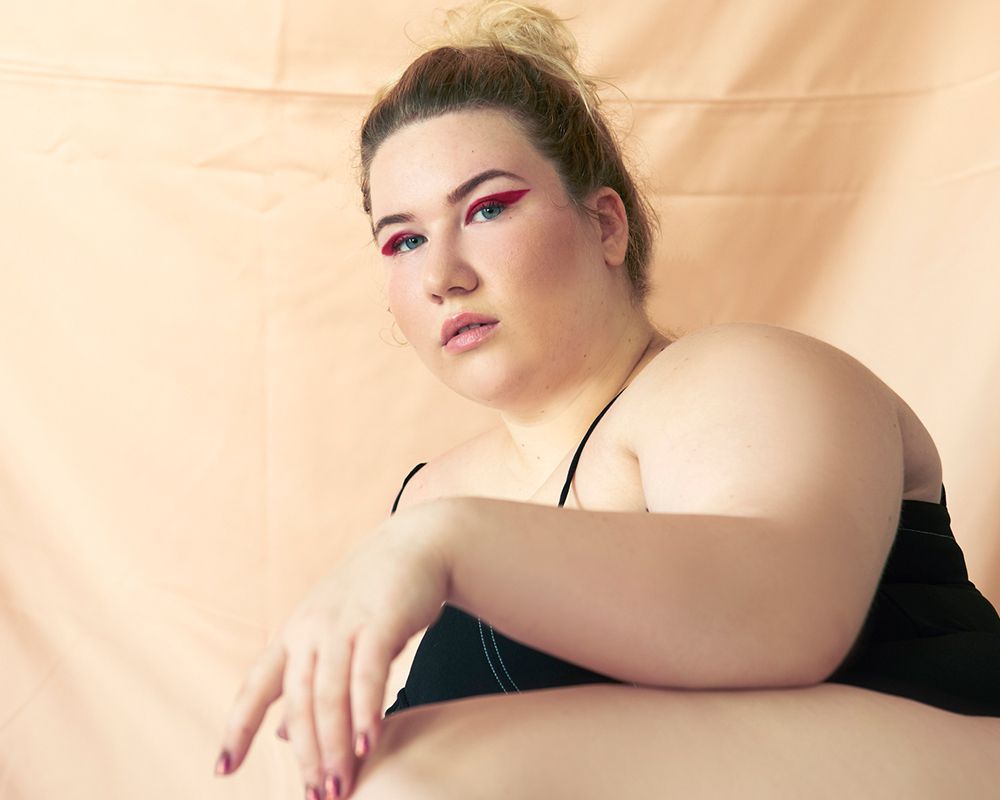Here’s What Those Red Spots Are on Your Skin
Finding a new mole on your skin can be alarming. We imagine a small dot with a bright red hue that feels like it sprouted overnight would make even the coolest cucumber sweat (figuratively speaking, of course). Before you jump down the self-diagnosis rabbit hole of the world wide web, we want to talk about cherry angiomas. To get the details on the cause, identifying characteristics, and treatment options of cherry angiomas, we talked with New York City dermatologist Dr. Hadley King and board-certified dermatologist Dr. Jessie Cheung about these tiny red moles. Keep reading to learn more.
What Are Cherry Angiomas?
Cherry angiomas are hard to miss. Spotting one could set off an alarm for many people, but board-certified dermatologist Dr. Jessie Cheung says not to worry. “Cherry angiomas are small bright red bumps, made up of clusters of blood vessels,” she explains. “They are harmless and don’t hurt, but can bleed if scratched.” The tiny oval or rounded shaped moles can appear anywhere on the body. However, they typically occur on the chest, abdomen, back, arms, and legs.
Cherry angiomas are small red growths on the skin made up of blood vessels (hence their hue). They can appear anywhere on the body.
What Causes Cherry Angiomas?
The reason the benign moles pop up in these specific areas is unknown. But there are a few factors like genetics, age, and hormones that can play a role. “We don’t know the exact cause, but there is a genetic factor that makes some people more likely to get them,” King explains. She notes that they can also increase during pregnancy and in your 30s.
If you’re wondering why changes occur during pregnancy, Cheung says it’s likely due to estrogen. “[During pregnancy] estrogen makes the blood vessels dilate.” There is a change in the body that can influence the development of cherry angiomas as we age, too: collagen production. “Cherry angiomas are most commonly due to aging, as collagen thins and superficial blood vessels have less support,” Cheung explains.
What Do Cherry Angiomas Look Like?
We already know that cherry angiomas are bright red in color, but there are a few other characteristics to look out for, including their texture and size. “They may be flat or slightly raised [with the] usual size from pinpoint to quarter-inch in diameter,” says King. “The surface is usually smooth. They generally are asymptomatic [and] don’t itch or hurt.” Before we move forward to treatment, we want to answer a question that might be at the top of your mind: Are they cancerous? The good news: they aren’t.
“Cherry angiomas do not become cancerous,” says Cheung. “There are other blood vessel growths that can become cancerous, but [they have] different characteristics. There are rare reports of sudden eruptions of cherry angiomas as manifestations of internal cancers that secrete growth factors that stimulate blood vessel proliferation, but these eruptions are associated with other symptoms.”
How Do You Treat Cherry Angiomas?
Treating cherry angiomas isn’t as simple as purchasing a new skincare product or exfoliating. The only way to successfully remove them is by paying a visit to a physician. Your treatment’s cost and time commitment will vary depending on how many cherry angiomas you want to be removed. The most common forms of removal are electrocautery, lasers, and shave excision.
“Cherry angiomas can be removed by electrocautery or lasers,” says Cheung. “These treatments involve heating the blood vessels to seal them off. She also notes cryosurgery as a helpful option: “[This procedure] uses liquid nitrogen to freeze the blood vessels, causing the angioma to shrink and fall off.”
King recommends pulsed dye laser removal as she says it is generally the most effective way of shrinking or getting rid of cherry angiomas and is quick and relatively painless. During this procedure, a light is used to break down the blood vessel at the root of the angioma. You can expect each treatment to take about 30 minutes and the experience to feel like a rubber band snapping against the skin. Post-treatment discoloration is common and can last up to 10 days. The cost of one session starts at $250, and on average, at least three sessions are recommended. However, the cost will vary by location.
One final form of treatment is the shave excision: During this procedure, your doctor will use—you guessed it— a sharp razor to remove the mole. First, your practitioner will inject the area under the mole with an anesthetic (this helps numb the area and causes the mole to rise to make it easier to remove). Next, the removal process begins. After removal, there may be electrosurgical feathering to smooth the edges of the removal area. Lastly, the area is cleaned, treated with an ointment, and covered with a bandage. The site can take four to six weeks to heal, so patience and extra care are required. This procedure’s cost has a pretty broad range depending on your unique needs, but $150 is the base, with the upper range reaching the thousands.
Even with the removal options laid out, King says you can leave the tiny red moles right where they are. “There is no need to treat them unless they bother you cosmetically or if there is one that is frequently bleeding or inflamed.”









